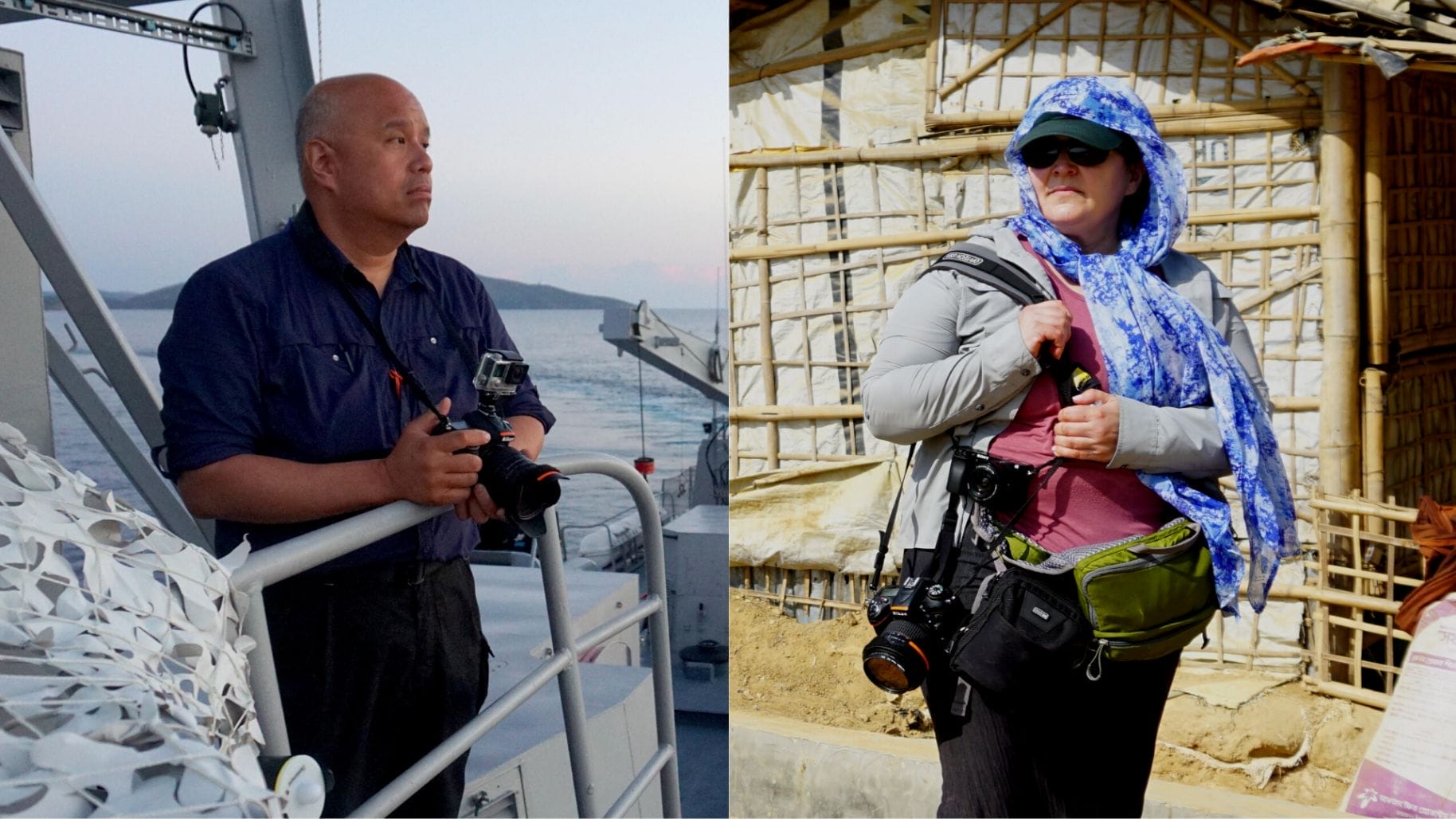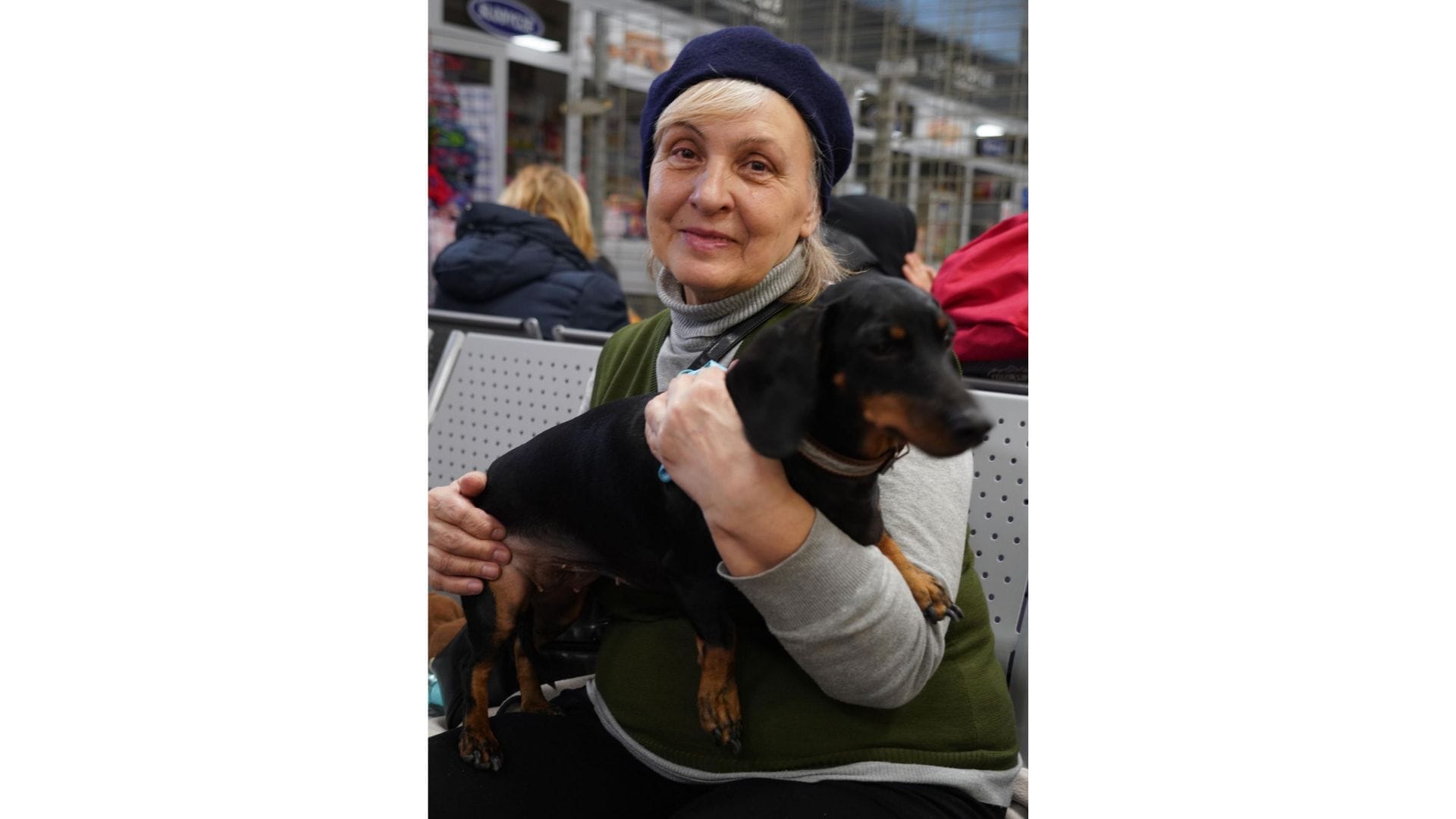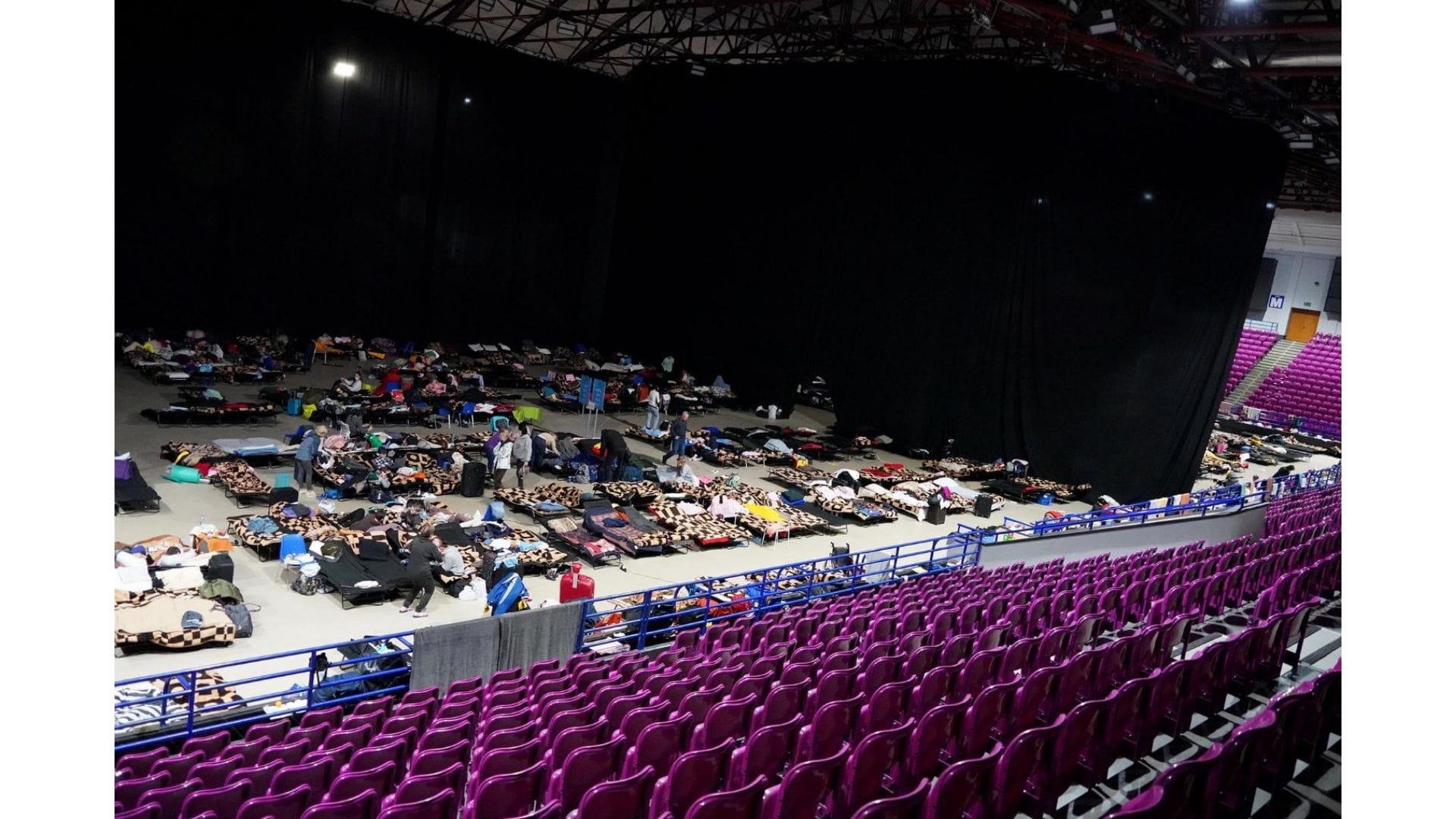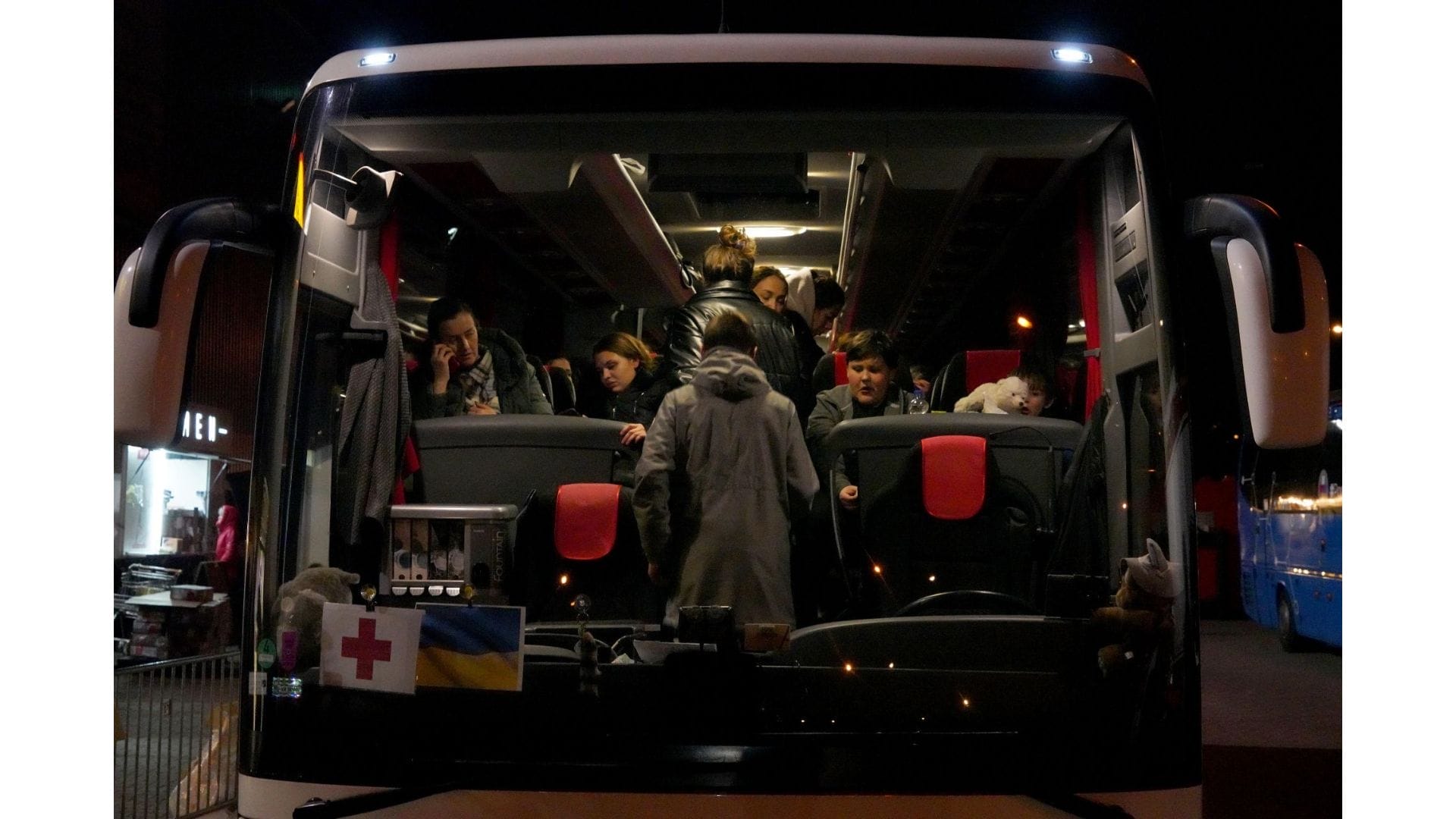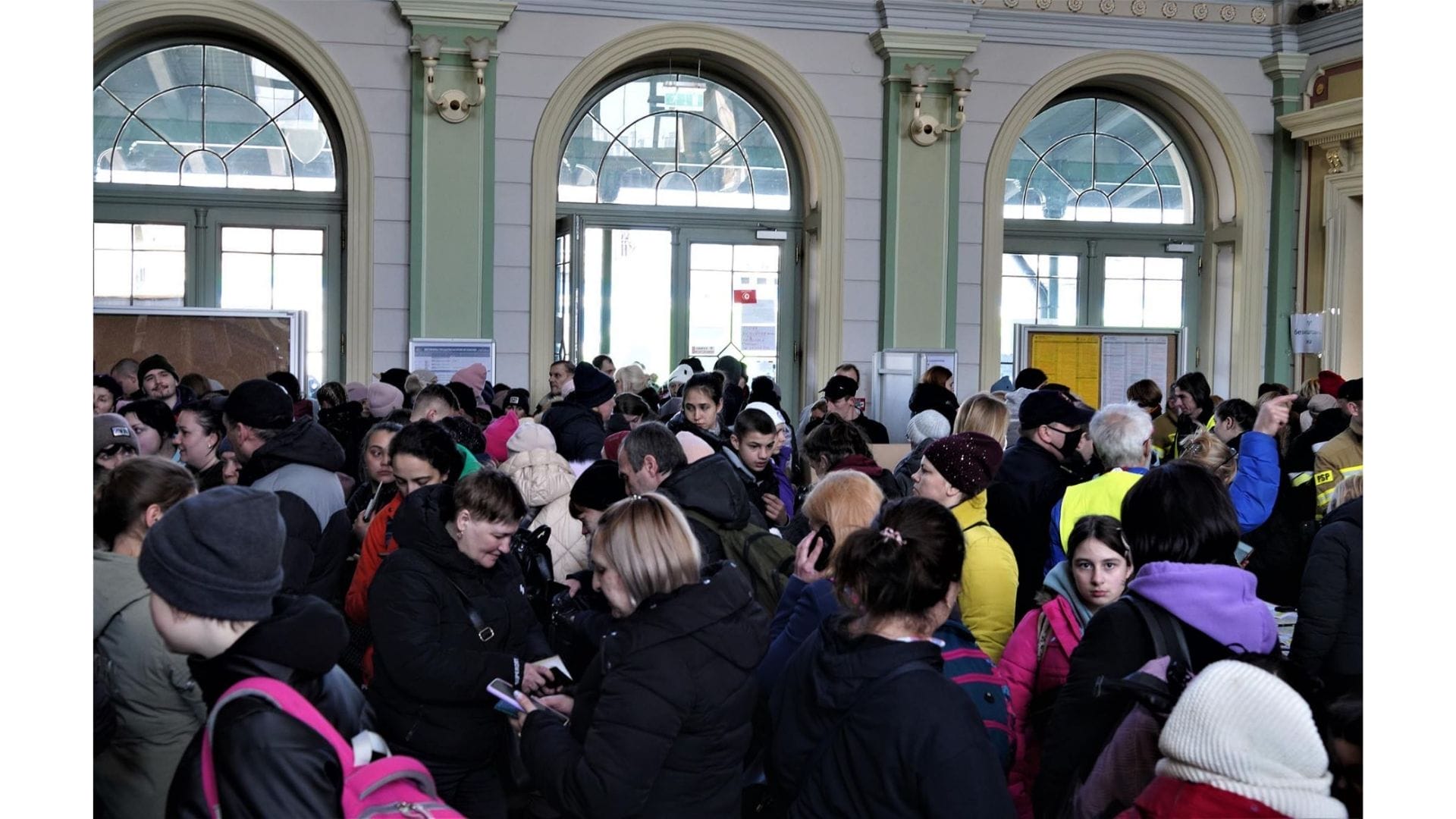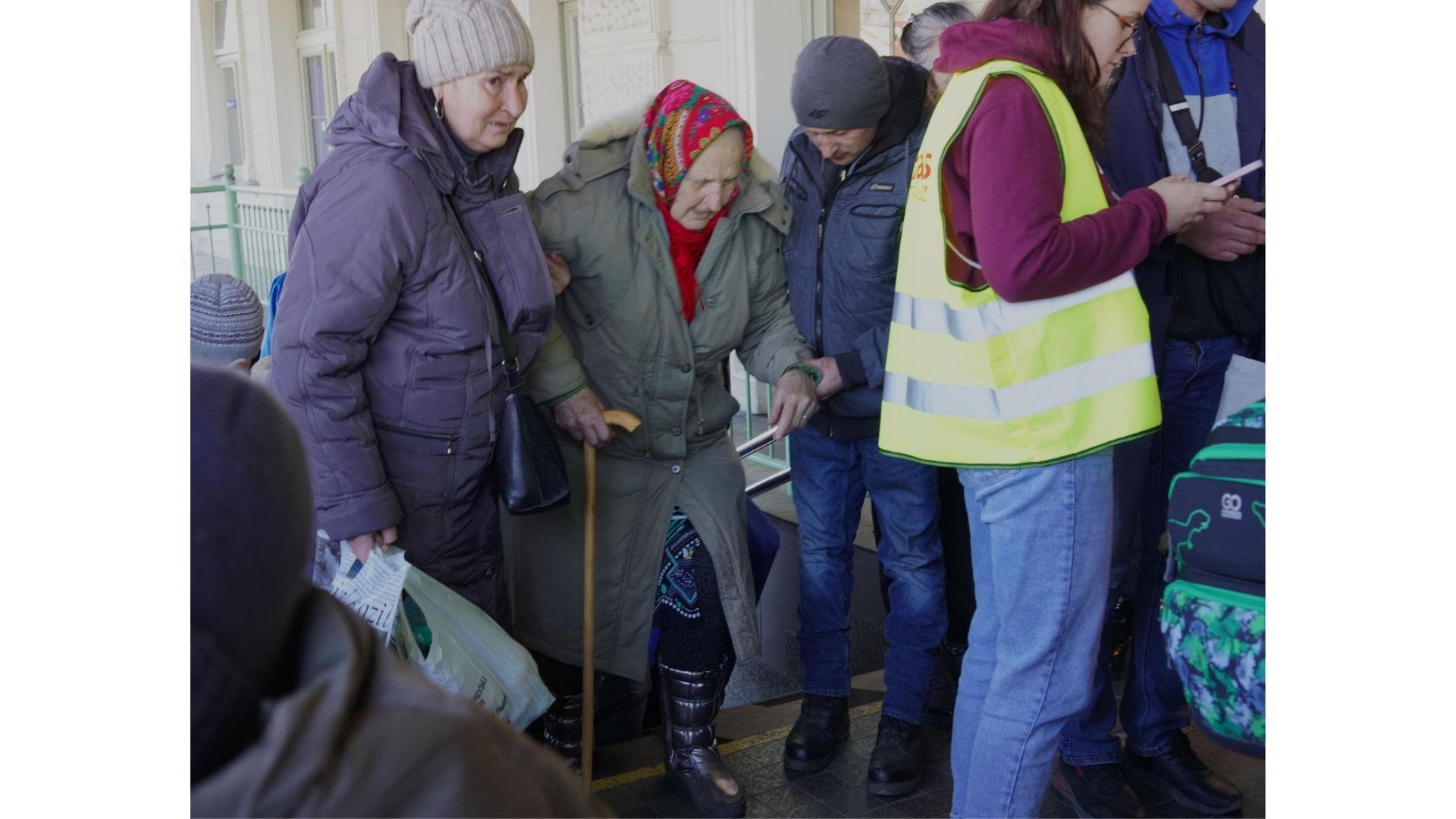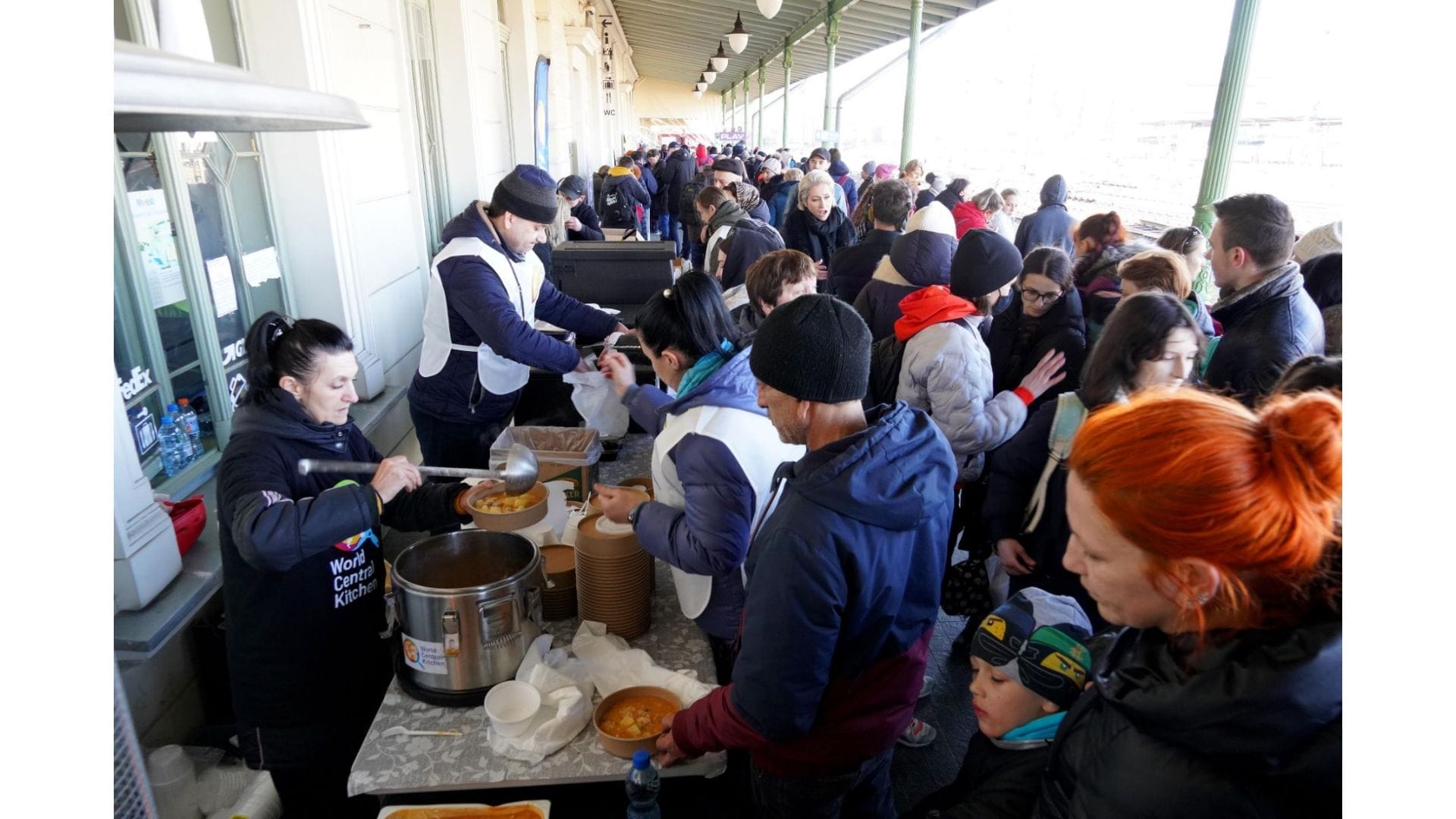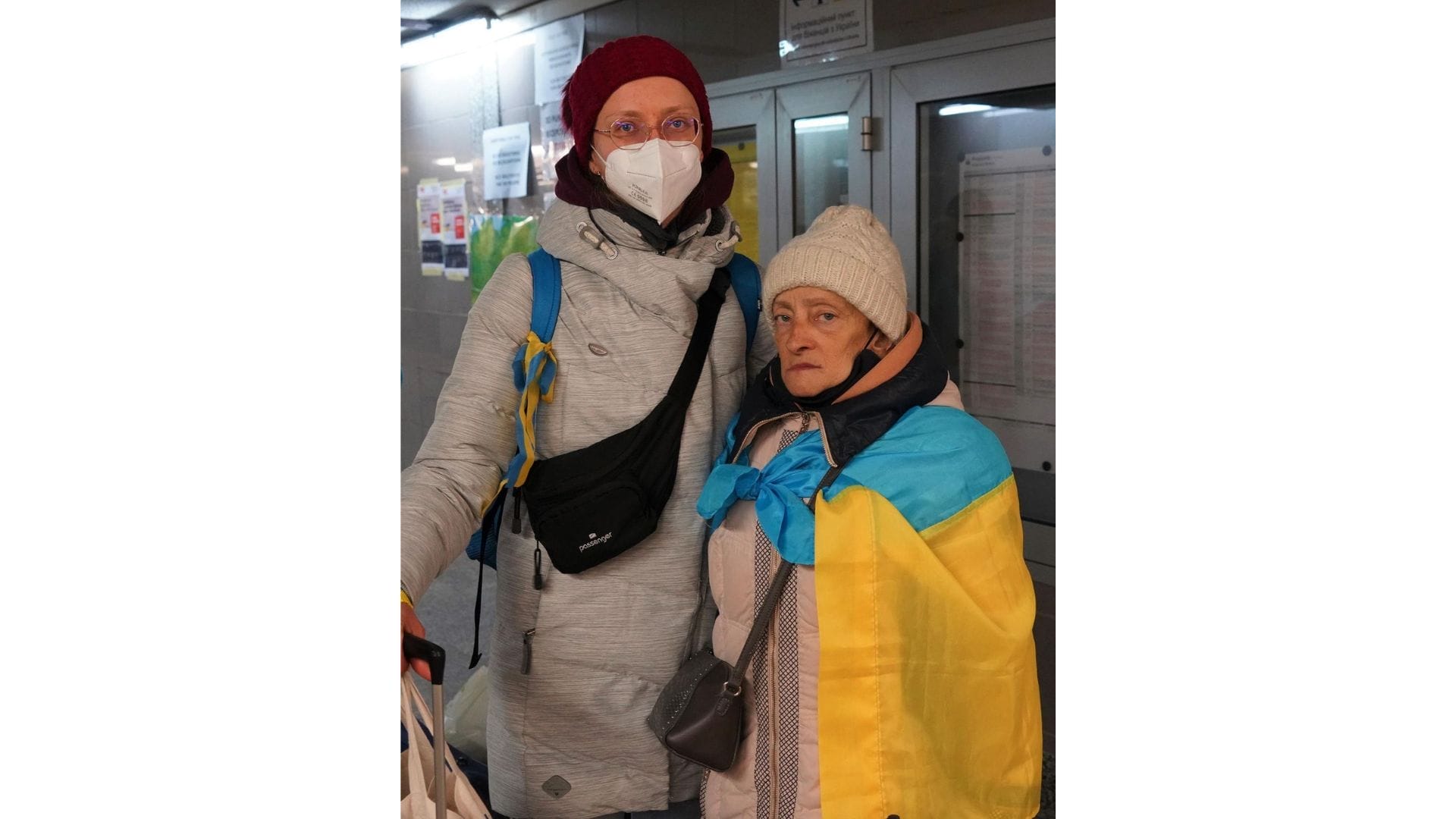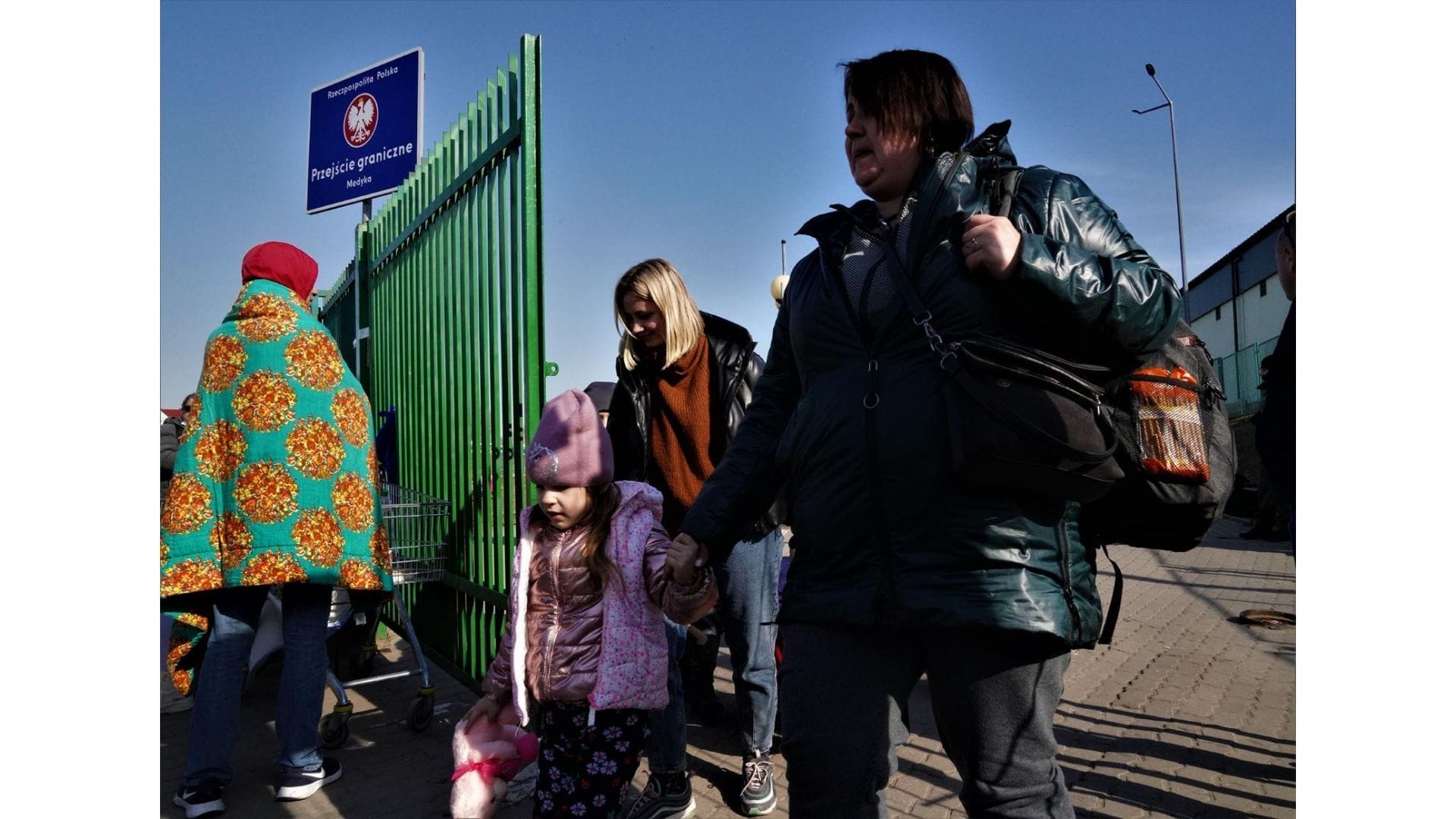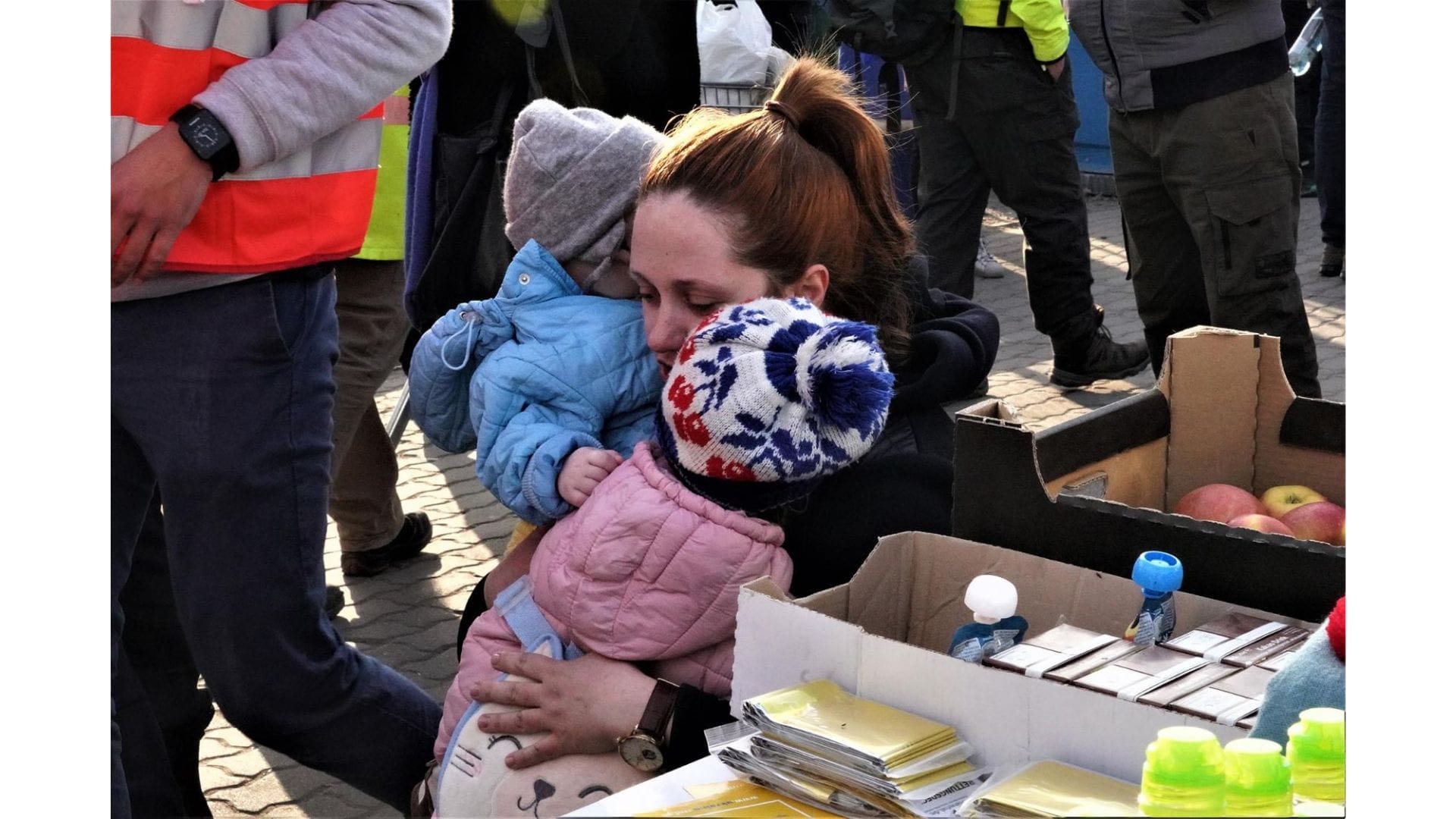The United Nations estimates that roughly six million people have fled Ukraine since Russia began its invasion of the country in late February. Of those seeking safety, more than 3.25 million refugees have crossed into Poland. Moving swiftly in the face of the crisis, Daniel Farber Huang WG94 and Theresa Menders WG94 traveled to Poland for 10 days in March to bring greater awareness to the situation as part of their Power of Faces project. Through the ongoing initiative, Menders and Huang have sought over the years to shed light on the broader global refugee crisis by photographing individuals who have fled their home countries around the world.
In Poland, their pictures at relief centers, transportation hubs, and a border checkpoint serve to provide a firsthand sense of the invasion’s devastating impact on Ukrainians. Huang and Menders shared some of their photographs and insights from their time in Poland — as well as a little-known secret about their own lives — with Wharton Magazine.
Wharton Magazine: What has your journey as photographers looked like since graduating from Wharton, and what specifically led you to start the Power of Faces?
Daniel Farber Huang: We’ve been working as a wife-and-husband photo team for over 20 years. Our earlier work focused heavily on New York City’s post-9/11 recovery, and much of that work has been archived in the permanent collections of several museums and historic institutions. We’ve had an ongoing focus on women’s and children’s issues and the alleviation of poverty around the world, having worked in Colombia, Haiti, Honduras, China, India, the Republic of Vanuatu, and several other places. When the global refugee crisis began in 2015, we wanted to understand what was happening as millions of people were being displaced due to conflict and persecution. Over the ensuing years, we have documented the plight of displaced people in refugee camps across Greece and in Turkey, Bangladesh, and Mexico.
When we met with people in the camps, we realized that most everybody had lost their treasured family photos when they fled their homelands. Now, we travel with several portable photo printers and our favorite orange backdrop. Our intention is simple: We believe having a printed photo of family or friends is a special thing to hold in your hands and can be a great comfort in times of need. We intentionally crop out the context of the refugee camp to focus on the individuals, not their label as merely “refugee.” To date, we have distributed thousands of printed photos to displaced people and are continuing to do so.
At the refugee camps, people may be living there for weeks, months, or even years. Inside the camps, we are granted permission to set up our makeshift photo studio to take and give proper photographs to people. Given the fast-moving nature of the situation in Poland, we weren’t able to plan for a studio or distribute photos as we normally would. Instead, our intention was to raise awareness of the challenges and dangers Ukrainians are facing as they flee the violence in their homeland.
Theresa Menders: We’ll let you in on a little secret: We both have full-time day jobs. I am a chief of staff at a pharmaceutical company, and Daniel is a strategy consultant. Our documentary work is done whenever and wherever we can fit it between our jobs, our four children (which is a whole other story!), and the demands of daily life. We plan our time accordingly because this is important to us. What we’ve learned from our experiences is that focusing on helping people does not take away from the other parts in our lives; it truly does open up so much more — not just on an emotional or spiritual level, but in the way we prioritize and spend our waking minutes.
WM: What do the paths of the people you’ve met on the Poland-Ukraine border look like? What typically are their options after crossing the border?
Huang: There are enormous practical considerations displaced people have to navigate, from things as immediate as finding water, food, and shelter to obtaining information (such as where they are currently located, what is happening back in Ukraine, what their next options are) and communications (such as practical needs like obtaining a new SIM card that works in Poland) to continuing on their journey (obtaining transportation, deciding to stay inside Poland or venturing further).
Fortunately, at present, there is an outpouring of compassion in many parts of Poland, where resources are being directed to help Ukrainians, such as basic relief supplies from NGOs, temporary shelter in state-run reception centers, free SIM cards being offered by cell operators, and free train and bus tickets offered by the Polish government. For anyone who is fleeing for their safety, having to figure all of this out and more — when they’re exhausted, scared, and responsible for the safety and well-being of their families — must be terrifying day after day. Furthermore, everybody has someone — a husband, father, brother, son — who is back at home in Ukraine, and they are fearful for their lives in the war.
WM: What are some of the greatest needs of the refugees you’ve met in Poland?
Menders: Psychological first aid and survivor mental health is extremely important but is often an afterthought or ignored in these situations. That’s partly due to different stigmas or misunderstandings around the world attached to the concept of mental health. Another challenge is that mental health is simply not included as part of the conversation around humanitarian relief and recovery, but it is one of the critical elements that can help people heal and move forward, not only mentally but physically and emotionally.
I’ve been interviewing with field doctors, and there seems to be general consensus that psychological first aid and psychosocial support is highly important and additive, but there simply aren’t enough, if any, resources directed to it: trained practitioners, information dissemination and education, and dedicated resources that can be placed when and where needed. The sooner these services can be provided to traumatized individuals, the better the longer-term mental health well-being and overall health implications. I’m surveying the disparate resources that may currently be in place around the world and also working to confer with universities, medical centers, practitioners, and advocates to see what resources or services may be aggregated or scaled for future crisis situations.
WM: Unlike some of your previous work, in which you had ample time to plan your arrival at long-existing refugee sites such as those in Greece and Bangladesh, you arrived in Poland within a matter of weeks of the crisis’s onset. What did that process look like, and why was it important to get on the ground quickly?
Huang: An important part of what allowed us to be on the ground so quickly in the current crisis are the lessons we’ve learned covering other situations around the world, so our ability to respond immediately is built on experience. In any crisis situation, we try to be as prepared as possible to ensure we have clearly defined plans, objectives, and access to locations and individuals, as well as personal safety considerations. We do also know that, once we are in-country, the landscape can shift rapidly and we have to be flexible and willing to improvise to document the situations. Sometimes, we are able to have advance written authorization from government entities to gain access; other times, we frequently have to navigate bureaucratic and other obstacles once we land.
Menders: In the weeks and days prior to Russia invading Ukraine, we were seeing actions and events compounding, which were all moving closer to the likelihood of war and the humanitarian crises that unfortunately always arise. We know that raising awareness of humanitarian crises can spur action. The faster we can document the situation and share objective information with the public, the faster at-risk people can be helped.
WM: Out of all of your work through the Power of Faces, is there a particular place you’ve visited, or a person you’ve photographed, that especially continues to resonate with you?
Menders: I spent a significant amount of time with a Ukrainian mother and her two-year-old son at the Medyka crossing in southern Poland. After crossing the border, she was able to obtain a temporary location in a makeshift “women and children” safe area within a tent set up by Sauveteurs sans Frontières (Rescuers Without Borders). It is apparent that many refugees are suffering from PTSD, as we all would if placed in a comparable situation. She became frightened whenever she heard police sirens or other loud noises because of the horrors she had witnessed. She also had to worry about not just herself but her child. She kept asking whether she was safe there and was visibly shaking. Fortunately, she was able to obtain the medicine she required, and her son could get some rest. I sat with her for a few hours, attempting to converse with her as her exhaustion set in. The tent was only able to provide one night’s temporary relief, allowing her to spend the night with her son there, but her journey was far from over, and she would have to go on.
Huang: At the Poland border, a mother with two children — a teenager and a toddler — was visibly distressed, appearing pained and tearful as she entered Poland through the checkpoint. I intentionally did not take her photo because it didn’t feel right. Then she came over and wanted to start a conversation with me. Lyudmilla, the woman, told us that her home and neighborhood about 35 miles to the east was bombed with her family inside. Her 17-year-old son, Slava, pulled her and her infant out of the rubble. Her parents built the house. Her husband stayed behind in Ukraine to fight. Tears flowed down her face as she said, “Bombs started detonating. Everything started exploding, destroying itself. I was afraid. It was terrifying… They were dropping bombs on our children, such tiny children…”
Interested in learning more about the duo’s efforts? Join them for a virtual conversation hosted by the Wharton Club of New Jersey on Wednesday, June 8. To view more of their photographs from Poland, take a look at their Instagram page.




















